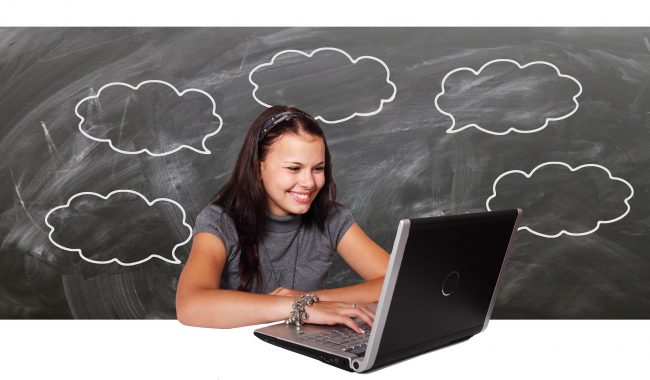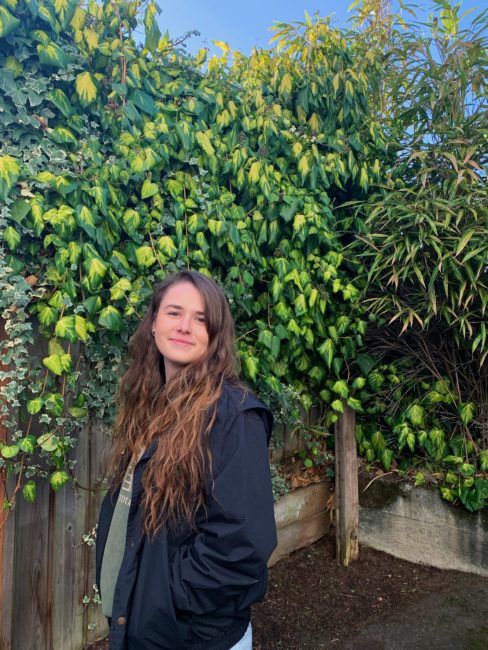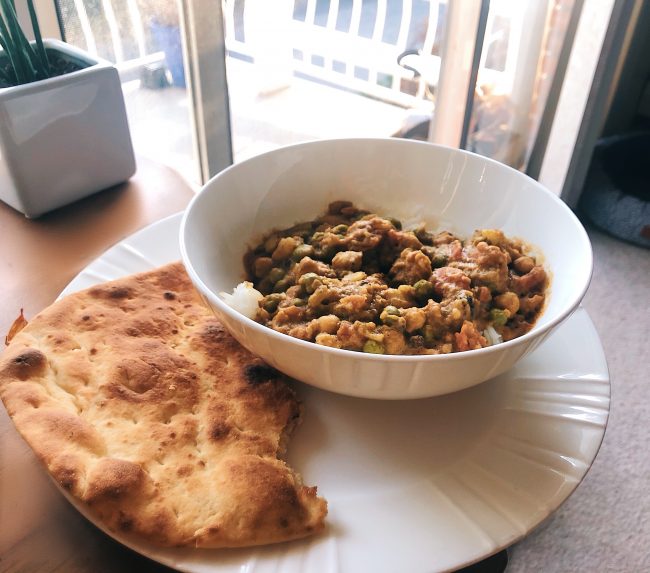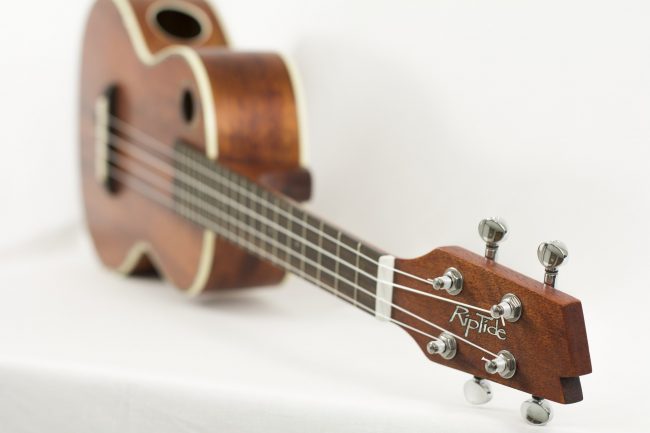This week our group determined who was going to present what information in our presentation. There is a multitude of technology to assist students with disabilities in the classroom, and everyone is the group was fairly passionate about a few. We decided to focus on SMARTBoards, Text-to-Speech and Speech-to-Text software, as well as Computer Assisted Instruction. While doing research for my seminar inquiry, I came across Computer Assisted Instruction. My inquiry is on how teachers and schools can adapt classroom in order to better support students with ADHD. Computer Assisted Instruction is beneficial for students with ADHD because it is stimulating, gives immediate feedback, and can allow students to adjust what information they are recieving, and how they can recieve it. I am looking forward to going more indepth and finding out what other disabilities CAI targets, and the benefits and challenges that come along with it.
Midterm Video Upload
I am excited to show you the progress I’ve made so far this term. Although I know that I have a lot more to learn, and listening to the recording of myself definitely highlighted that for me, I am far ahead of my growth plan! I am eager to hear the feedback, recommendations, and tips for improvement given the fact that I’ve taught myself ukulele and have not sung (other than in my car and around the house) for quite some time. I would love to add one or two more songs to my growth template for the remainder of the semester and see what else I can learn!
A Little About Me…
My name is Kayleigh Udy and I am currently in my second year of the Elementary Education Program at the University of Victoria. I have been passionate about working with children from a young age, and that passion has never faded. The numerous amount of teachers and role models throughout my life have allowed me to develop an adoration for teaching. I began teaching in my Grade 12 year when I worked at a gymnastics gym and taught the class for students with special needs. From there I began teaching the primary levels and thoroughly enjoyed the experience of helping students learn something new. I have worked in many different roles caring for and working with individuals of all ages with varying special needs, and I have loved every second of it. Through these experiences, I have developed skills in my ability to adapt programs, activities, and assist individuals in making meaningful connections with peers and others in the community.
Musical Growth – Blog #3
Over the past couple of weeks, I have been focusing on playing and holding my ukulele properly. During the class time to practice our assignments, Anita came into the room full of my peers and I who were all practicing ukulele and let us know how to properly hold and play the ukulele. Since the beginning of my self-taught ukulele journey, I have held my uke on my lap, resting on my chest, and strumming in the middle of the body of the instrument. We learned that the proper way to hold the ukulele against your chest with your right forearm across the top edge of the lower bout. Your strumming finger should be able to comfortably reach almost to where the neck meets the body. With your left hand, you put the pad of your thumb on the top half of the back of the neck somewhere between the nut and third fret. Since adopting this new technique I have found that my ukulele stays in tune for longer and sounds crisper, and allows me to switch to new chords with more ease.
I am still having a small amount of difficulty singing the song, but have found that playing and singing along with the song, or a cover, helps me stay in tune throughout. I believe that I have stayed fairly on-track when it comes to following my growth template, and have learned some additional skills that were not outlined on the template. I am both nervous and excited for the video upload in a couple of days and hope that the process is relatively painless. I know that there is room for growth throughout this process, and I am intrigued to see where the rest of the semester will take me.
Musical Growth – Blog #2
This week we had time to work on our musical growth in class. It was such a wonderful experience to have peers that were working towards a similar goal as mine in the same room practicing. I was able to help some classmates out with their ukuleles, strumming patterns, and helpful tips for switching between chords. I find that helping and teaching others also helps me to learn and grow. I also got to learn some new fingerpicking techniques from my classmate, David. It was to one of my favorite artist’s songs, Breakdown, by Jack Johnson. I’ve always struggled with fingerpicking and learning those types of techniques from online or youtube videos, and I found it incredibly helpful to learn in person. I have overall learned so much from being able to collaborate with classmates, sing and play songs together, and learn from others.
For Somewhere Over the Rainbow/What a Wonderful World, in particular, I am still finding the chord Dm7 a battle. I find that it doesn’t necessarily sound pleasant within the song, and I tend to hum or sing out of tune when attempting to play it. I have watched a couple of different YouTube videos in order to try and play the chord properly, and think that the transition into it also needs some work. I have also attempted to watch more YouTube videos of different individuals singing the song, as well as listening to the original more often. Immersing myself in the song and rhythm is assisting me in my journey, as it allows to me have a clear idea of what I should be doing in order to excel in my performance of it.
Vegan Potato Curry
Tonight I made some Vegan Potato Curry. I looked up some recipes on Pinterest for some curries that looked relatively easy. Its definitely starting to feel like winter is coming already, and I thought that some warm-comfort food would be a great idea.
I took a much better picture of my food this time, and I am pretty happy with the results.
Through doing this recipe, and given the fact turned out so well, I have started to wonder how many vegan/vegetarian meals I could make throughout this Inquiry Project. Although I don’t think that I will be able to make all of the recipes veggie, I think it would be an exciting thing to try and get more comfortable with some recipes that are better for the planet.
Below are some adjustments and tips n tricks that I learned through the night.
- Start off with boiling potatoes
- Peel potatoes
- Cut into cubes
- Boil for 15 minutes
- Then cut the onion
- Leaned how to cut an onion properly and with more precision
- Messy and crying, but best I’ve done it
- Then put the onion in a pre-heated pan
- Prepped the same as the fish tacos recipe
- Put together all of the spices while you are waiting on the onions (which need to be stirred every two minutes so that they cook evenly)
- Pretty much double all of the spices except for cyan because I can’t handle too much spice
- Rae always adds garlic and onion powder to add a little extra flavor
- And turmeric for extra color and health benefits
- Add minced garlic to the onions in the pan
- Learned to carefully crush the garlic to get the skin off of it
- Add spices and coat the onion and garlic in the mixture
- Next, I learned how to peel ginger with a spoon and grate it
- Add this to the pan
- Add a can of chickpeas and a can of diced tomatoes
- You want to squish to tomatoes before adding them to the pan to help them absorb more flavor
- Strain the potatoes and rinse with cold water
- You always want to rinse starches with cold water because it helps them stick to the pan less
- Add in frozen peas and currents
- Added in coconut milk earlier than normal because the ingredients were looking a little dry
- Learned how to make real rice (and not 5 minutes rice)
- Rinse the rice
- 2 cups of rice and slightly less than 4 cups of water
- Let the rice boil, stir, and move to a cooler element (low) and leave for 20 minutes
Privacy and Safety – Jesse Miller
Today we had the pleasure of having Jesse Miller come and speak to our class about privacy and safety on the internet. I have never understood how the internet works as much as I did after this presentation. Miller focused on the role that technology has within an educator’s personal-life and classroom. “We always need to be learning more about the tools human beings are using that are always evolving”: this quote is one of the first things that really stuck with me during the presentation. Although new and evolving technology can be scary and hard to understand, I have realized that the more we know the better; that we can understand the impact we are making, and the impact it has on our lives. This quote doesn’t necessarily focus on technology, but the overall human experience. Technology and screens are the new normal, and that normalization is also multifaceted. Another aspect of the internet that Jesse focused on was the by-product of anything that we interact with on the internet. Ads, google-home, and proving you are not a robot all have by-products that are helping improve and have innovative effects.
The next important aspect that Jesse focused on was “network citizenship”. This section of the presentation highlighted the concept of digital identity, and who you decide to present yourself as on the internet: Parent, friend, professional, educator, etc. When applying for jobs, or in a professional setting, parents and bosses at your job will judge you based on your persona on the internet. We are the first generation where the majority of things that we’ve done in our past is online. This part was particularly stressful to think about. Past generations embarrassing or immature moments were typically held in year books and photo albums. Now, all of our past is on the internet, whether we want it there or not. Jesse depicted the importance of communicating with friends and family about your personal boundaries of what you are comfortable friends posting of you on the internet. In terms of use of mobile technology by educators, Jesse spoke about the importance of balancing professional expectations. In the current social climate, parents feel as if given the fact that they can access you 24/7 means that they should be able to. Teachers are already bombarded by long work days, and having to bring work home for program planning and grading. One of my classmates mentioned a site called Fresh Grades where teachers can post upcoming events and what children will be learning within weeks of school so that they are not bombarded by emails all of the time. Another wonderful thing about Fresh Grades is that its an online tool to communicate with families where all of the data is stored within Canada, and therefore is following privacy codes.
Another part of Miller’s presentation that I found impactful was his idea that as parents and teachers we need to figure out what kids are doing with technology and engage and participate with them. Technology can be used as a distraction for both parents and students, but if we are able to find ways to make technology an educational experience, teachers, parents, and students will be more engaged. The majority of articles that parents are engaging with that talk about technology are written by parents or teachers, not researchers. This means that only half of the evidence is making up 100% of the value in their minds. It is important for teacher and parents to look into research, who did it, and how they are doing it. Another aspect highlighted in this section was about teacher and student accountability in terms of cellphones in the classroom. If students are bored, they are more likely to need more stimulation, and therefore, will end up being on their cellphones. If students give respect to their teachers, the brain, and learning environment, they are more likely to be stimulated: “when teachers treat their classroom like a team sport, there is more regulation and accountability”.
As future teachers, we hold a lot of power in the information that we have, and what we do with it. Digital consent is something that I have been aware of for a few years now. Given the fact that Ive work with at risk youth for 6 years, consent is an extremely important thing within my jobs. I have taken multiple courses and signed multiple documents that have to do with privacy and media consent. Jesse highlighted multiple important questions to ask yourself before taking or posting information: did you ask permission?; are you sharing information without informing the person it may impact?; are you aware that illegal consent on your device may impact your life in a variety of ways?. His main point was that you need to share information with care.
The last impactful piece of information that Miller shared was a quote from John Culkin: “we shape our tools and therefore, our tools shape us”. The tools we shape, such as technology and social media, become part of our culture.
Fish Tacos – Breading Fish
Today I embarked on learning how to bread fish… and make fish tacos! I usually make pretty simple tacos with veggie meat that is pre-seasoned, but today I thought I would try something new. I found the process far easier than expected, and they ended up tasting amazing. My partner walked me through the steps of breading fish and taught me how to fry it as well.
Below is the recipe that she taught me, with some tips and tricks on the side.
I found that I liked writing out the steps in point form because I know it will help me in the future when trying to recreate this recipe. I also don’t have any pictures of the tacos because the ones that I took are quite awful. That is another thing I am hoping to add to my repertoire, how to take some more appetizing pictures of my creations.
BREADING THE FISH
- Start out with getting the pan nice and hot
- Set at medium so that it cooks all the way through, and not just the outside
- What happens when its too hot
- Set oven to 170 in order to keep fish warm while getting everything else ready
- Set at medium so that it cooks all the way through, and not just the outside
- Set up station of eggs –> flour —> panko
- As soon as the fish is breaded you want it going into the pan so that the breading doesn’t get soggy from the eggs
- Two eggs
- Wisk eggs together in order to mix the whites and yolks together
- Add spices to the flour (sticks best to the fish)
- Garlic powder, pepper, salt, paprika
- Wisk them together
- Right before breading, you want to heat the oil in the pan
- And you know the pan is hot enough for oil if you put a tiny bit of water in your hands and flick it in the pan and it sizzles
- Dip the fish into the egg, and then the flour
- Make sure the flour is covering completely
- Then back into the egg and then into the panko
- And then into the pan
- Fish is ready to flip when it is golden brown around the edges
- Fish will feel a lot more firm and then you know that it is completely ready
- You don’t want to overcrowd the pan because it gets too steamy and it makes the breading on the outside soggy instead of crispy
SAUCE
- Juice two limes
- Sprinkle of garlic powder
- 1/3 cup dollops of sour cream
- 4 tbl spoons decent squirt of mayo
- A tsp of siracha
- Wisk together
RANDOM OTHER ASPECTS
- Red peppers
- Avocado
- Lettuce/coleslaw depending on your preference
- A little bit of fetta
Introduction – Technology Adaptations for Children with Learning Disabilities
For our Educational Technology Class, we have been tasked with creating an Inquiry Project related to Technology use in an Educational context. We have been put into groups to work on this, and will therefore be collaborating, researching, and posting together! Our group is, Madi, Jess, Kayleigh, and Jessica. We will each be taking on different aspects and responsibilities of the project, but will be amalgamating our research and learning together to create joint weekly blog posts, which you can follow along with on any of our individual blogs:
http://jessoneducation.opened.ca
http://jessicaludwig.opened.ca
We will be collaborating on this project throughout the semester. We have chosen to focus on how technology can be utilized in the classroom to make adaptations for children with learning disabilities. We will work together to explore and research this topic, which will culminate at the end of the semester as a presentation to the rest of our class.
We look forward to sharing our learning with you,
-Jess, Madi, Kayleigh, and Jessica
Somewhere Over the Rainbow/What a Wonderful World
I have spent the last couple of weeks working through the chords and new strumming pattern for my growth project. I have found a couple chords in particular to be fairly difficult to remember and execute: Dm7 and E7. These two chords are both new, and tricky to transition smoothly into. I have watched a few YouTube tutorials on how to strum the song the way that Israël Kamakawiwo’ole does while he plays, and although I have used the “island strum” before, I have never tried to adjust to playing it with the first “down” just plucking the G string; I have found that I stumble from time to time to keep up that pattern. When the song transitions from Somewhere Over the Rainbow to What a Wonderful World the strumming pattern and chord progression changes slightly, and that is a part of the song that I have to pay more attention to. Another difficutly I am having is with the beginnings of trying to hum and sing the song. Some parts of the song are within my tessitura and others are quite difficult to sing in tune.
Overall I am thoroughly enjoying this musical growth journey, and love that I get to take time every day to develop my musical abilities and play such a beautiful song.






